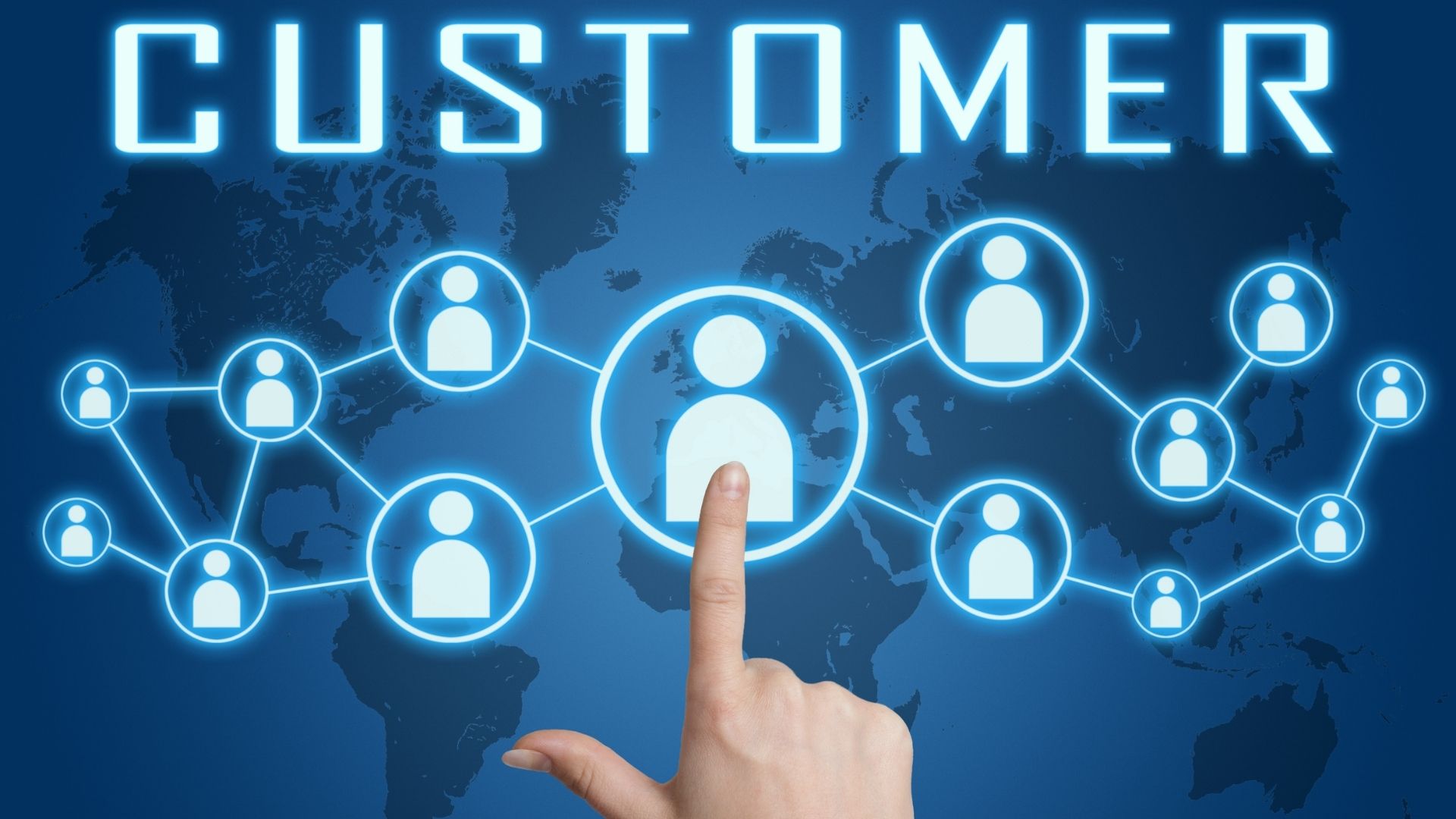The boostCX Blog
Knowledge and resources to help you build and scale your business.

New Customer Experience Management Trends for 2026
Looking forward and finding ways to adapt to new technology and new best practices is a key aspect of any business and it is important to understand the growing customer experience management trends to be able to provide a memorable experience. boostCX is looking forward to help you get ahead of the curve with this list of New Customer Experience Management Trends for 2026. Learn more about how hyper-personalization, Artificial Intelligence (AI), proactive customer experience strategies, and more will shape the future of the CXM.
5 Emerging Trends for Customer Experience Management in 2026
The customer experience (CX) has never been more important.
An estimated 90% of businesses make it their primary focus and 73% of customers say that the customer experience is the number one thing they consider when deciding whether to make a purchase. The global customer experience management market is projected to grow from $22.35 billion in 2025 to $68.24 billion by 2032 and it's clear that investing in a positive customer experience is a valid strategy to drive revenue.
Here are five key trends that will define a winning CX strategy in 2026 and beyond:
Hyper-Personalization of Customer Experiences
Hyper-personalization is about taking customer experience personalization to the next level by using advanced technology, like AI and machine learning, to create highly individualized experiences. This goes beyond traditional personalization, which might use a customer's name or purchase history, and uses a broader range of data points, such as browsing behaviors, location, and even contextual factors to tailor interactions in real-time. This can involve anything from dynamically customizing a landing page with relevant content to a chatbot that proactively suggests a new interest-earning account to a bank customer.
Continued Development of AI Technology
The use of Artificial Intelligence in customer experience is growing rapidly, with an estimated 22% growth in the conversational AI market between 2020 and 2025. AI-driven chatbots and virtual assistants have the ability to provide 24/7 support and handle simple customer interactions, freeing up human agents to focus on more complex issues. AI also opens the door to sentiment analysis, which helps businesses understand the emotions behind the customer feedback from various platforms.
Increased Use of Predictive Analytics
Predictive analytics is the use of data, statistical algorithms, and machine learning to forecast future customer behaviors and needs. It allows businesses to move beyond reactive service and anticipate potential problems before they become more severe. By analyzing a customer's history and real-time patterns, a company can proactively send an alert or offer a solution, which helps prevent customer churn and improves customer retention.
Increased Focus on Emotional Intelligence
In a more automated world, Emotional Intelligence (EI) in human agents is more important than ever. Emotionally intelligent agents are able to empathize with customers, de-escalate tense situations, and build stronger relationships, which helps build brand loyalty. By developing skills like self-awareness, self-regulation, and active listening, support teams can turn negative interactions into positive ones and make customers feel valued.
Continued Optimization of CXM Strategies
Always optimizing CXM strategies will be a key focus for companies in 2026. This involves using innovative tools and technologies to gather customer data, identify customer pain points, and create customer journey maps. By regularly monitoring KPIs like customer satisfaction scores (CSAT) and Net Promoter Scores (NPS), businesses can measure the impact of CXM strategies and make sure they are meeting expectations.
READ MORE: How To Find the Right Customer Experience Management Software
As customer expectations continue to grow and change, it is even more important to stay ahead of these New Customer Experience Management Trends for 2026. By embracing hyper-personalization, AI-powered solutions, predictive analytics, emotional intelligence, and continuous strategy optimization, you can set your business apart from your competitors.
Contact boostCX today to see how our customer experience management platform can help you implement these trends and strategies!

How To Map the Customer Experience Journey
Being able to understand your customers is critical to business success. But how do you really understand their interactions and experiences with your brand? The key may be mapping the customer experience journey. This innovative process allows you to see your business through the eyes of your customers and uncover critical insights that drive satisfaction and loyalty. Studies have shown that 86% of buyers are willing to pay more for a great customer experience, and companies that prioritize the customer journey and experience see increased revenue growth and this makes understanding every step of the customer journey imperative.
5 Steps to Map the Customer Experience Journey
Mapping the customer journey is a systematic process that goes beyond simply listing the interactions that customers have with your business. It involves taking a deep dive into customer motivations, emotions, and pain points across every stage of their interaction with your brand. By employing a structured and regimented approach, businesses can create comprehensive journey maps that serve as invaluable tools that lead to improvement.
1. Define Your Goals and Target Audience
Before you get started, it is important to clearly define why you are mapping the journey and who you are mapping it for. What specific problem are you trying to solve or improve? What goal are you trying to achieve? And then you need to develop detailed customer personas that represent your ideal target audience. These personas should include key demographics, behaviors, needs, motivations, and pain points to ensure your map provides as much information as possible.
2. Analyze the Customer Journey
This step in the process involves in-depth research of every single touchpoint a customer has with your brand, both online and offline. This starts with initial awareness and continues all the way to post-purchase support, and involves mapping out each stage. For every touchpoint, it is important to collect both quantitative data and qualitative data to better understand their experience.
3. Document Elements of the Customer Experience
For every touchpoint you identify, you need to go beyond just describing the action. Document the customer's actions, thoughts, motivations, and their emotions. This comprehensive documentation of each touchpoint and interaction helps you better understand the psychological aspect of their journey, revealing where positive and negative sentiments may come from.
4. Identify Pain Points in the Customer Experience
After you've documented the full customer experience from start to finish, a critical step is to pinpoint any pain points. These are moments of friction, frustration, confusion, or disappointment that have a negative impact on the customer's progress or perception of your brand. By identifying these areas, you can prioritize where improvements are most needed to create a more enjoyable experience.
5. Create a Visual Representation of the Customer Experience Journey
The last step in the process is to collect all of the data you gathered and create a clear, concise, and visual representation of the customer journey map. This could be a diagram, flowchart, or infographic that illustrates each stage, touchpoint, customer actions, thoughts, emotions, and identified pain points. A visual map makes it easier for teams across your business to understand the customer's perspective and create strategies for improvement.
READ MORE: New Customer Experience Management Trends for 2026
Effectively mapping the customer experience journey is not a one-time task. It is an ongoing commitment to understanding and serving your customers better. By following these steps, you can gain invaluable insight into how your business operates, which leads to increased satisfaction and customer loyalty.
Do you want to learn how to visualize and optimize your customer journey? Contact boostCX today for a demo of our customer experience management platform and get the tools you need!

How Do You Measure the Employee Experience?
Businesses have begun to realize that an exceptional customer experience (CX) begins with an exceptional employee experience (EX). But how do you measure the employee experience? How do you ensure your workplace is a positive, productive environment?
A strong employee experience is directly linked to business success. Data indicates that companies with highly engaged employees report 21% greater profitability. By measuring and understanding employee engagement, the employee experience, and employee sentiment, businesses can build a strong foundation for improved customer satisfaction, higher customer retention rates, and long-term success.
KPIs, Metrics, and Strategies to Measure the Employee Experience
Measuring the employee experience isn't about a single survey or Key Performance Indicator (KPI).
It requires a multifaceted approach that captures both the What and the Why behind employee sentiment. This can be achieved via three core methodologies. Qualitative Methods gather in-depth, subjective feedback to understand employee emotions and perceptions. Quantitative Methods use numerical data and select KPIs to track trends and benchmark performance. And Integrated Methods combine aspects of both qualitative and quantitative employee experience data to create a comprehensive view of the employee journey.
Qualitative Methods to Measure Employee Experience
Qualitative methods are important for uncovering the nuanced stories and personal experiences behind the hard numerical data you have. These strategies provide context and feedback that help you better understand the genuine feelings and motivations of your employees.
- One-on-One Interviews: Direct conversations with employees to discuss their roles, challenges, and overall experience.
- Stay and Exit Interviews: These structured conversations can help you understand why employees choose to remain with or leave the company.
- Focus Groups: Facilitated group discussions on specific topics like company culture, management, or new policies can provide valuable insight.
- Open-Ended Survey Questions: Including free-text fields in surveys that allow employees to elaborate on their ratings and provide specific examples.
Quantitative Methods and KPIs to Measure Employee Experience
Quantitative methods rely on hard data and specific KPIs to provide a more objective measure of the employee experience over time. Tracking these metrics is essential for identifying patterns, measuring the impact of new initiatives, and benchmarking against industry standards or your own previous marks.
- Employee Net Promoter Score (eNPS): This KPI measures employee loyalty by asking how likely they are to recommend your company as a place to work.
- Employee Satisfaction Score (CSAT): An important KPI that gathers direct feedback on employee satisfaction with specific aspects of their job, such as tools, management, or benefits.
- Employee Turnover and Retention Rates: This tracks the percentage of employees leaving the company versus those who stay over a set period.
- Absenteeism Rate: This KPI monitors the frequency of employee absences, which can be an indicator of burnout or disengagement.
Integrated Methods to Measure Employee Experience
The most powerful insights into the employee experience and employee satisfaction come from combining qualitative context with quantitative data. Integrated methods provide a comprehensive understanding by connecting employee feedback directly to performance metrics, creating a more complete picture of the employee experience.
- Employee Journey Mapping: This strategy helps visualize the entire employee lifecycle, from hiring and onboarding to exit, and layers both qualitative feedback and quantitative data at each touchpoint.
- Sentiment Analysis of Text Data: Use AI-powered tools to analyze open-ended survey responses or internal communications to quantify sentiment as positive, neutral, or negative.
- Correlating EX and CX Data: Analyze the relationship between employee engagement scores (eNPS) and customer satisfaction scores (NPS) to show the link between a happy workforce and happy customers.
READ MORE: Top 5 Ways to Improve the Employee Experience
It is important to understand how to measure the employee experience. It is the first step toward building a workplace culture that drives loyalty, productivity, and ultimately a superior customer experience. By employing a combination of qualitative, quantitative, and integrated methods, your business can gather actionable insights to greatly improve the employee experience and by extension, the customer experience.
Ready to see how a powerful customer experience management platform can help you connect the dots between your employee and customer experiences? Contact boostCX today for a demo of our platform!

How Will AI Impact Patient Experience in Healthcare?
Artificial Intelligence (AI) and its many applications are at the top of everyone’s mind when it comes to how technology is implemented in many industries - including the healthcare industry. When hospitals, clinics, pharmacies, and healthcare officials examine the patient journey and patient experience, they may have questions about how AI will impact the patient experience in healthcare and how it can help improve the relationships with patients. boostCX may have some answers.
What Are the Uses and Benefits of AI in Healthcare?
A positive patient experience is key to success in healthcare and has a direct influence on patient satisfaction, adherence to treatment plans, and even clinical outcomes. Many statistics show that hospitals with better patient experience scores have lower readmission rates and better financial performance. In addition, an estimated 70% of patients expect personalized care, and a poor and impersonal experience can lead to patients switching providers. AI provides a variety of ways to enhance this crucial aspect of patient care, from providing quick and measured support to streamlining complex processes that allow healthcare professionals to focus more on patient care, which ultimately leads to satisfied patients.
Provides Immediate and 24/7 Support
AI-powered chatbots are being adopted by more and more healthcare providers in an effort to offer immediate and around-the-clock support. These virtual assistants can answer many basic and frequently asked questions, provide basic information about symptoms, guide patients through administrative processes, and even provide access to mental health support. This immediate access to information and assistance reduces stress for patients and ensures they feel supported no matter what time of day it is.
Patient Engagement on Multiple Platforms
AI facilitates patient engagement across multiple digital platforms, making healthcare more accessible and convenient. With personalized recommendations, reminders, and educational content delivered via apps, portals, and other devices, AI helps keep patients actively involved in their own healthcare. This multi-platform approach caters to many different patient preferences and promotes proactive health management.
Improves Ability for Healthcare Professionals to Serve Patients
A key impact of AI is its ability to streamline workflows and automate mundane day-to-day paperwork and tasks for healthcare professionals. By making administrative tasks like data entry, recordkeeping, and authorizations simpler, AI frees up clinicians to focus on what matters most - providing direct patient care. This increases efficiency and also allows for more personalized and compassionate interactions with patients, which translates to a better experience for both patients and providers.
Reduces Costs for Healthcare Providers
A benefit that is not always visible to the patient is AI's ability to reduce operational costs for healthcare providers, which benefits the patient experience in the end. By optimizing resource allocation, preventing readmissions via predictive analytics, and automating tedious manual processes, providers can invest more time, effort, and capital into direct patient care, facilities, and new medical technologies. This can be a factor that contributes to more affordable care and a higher quality of service.
Automates Patient Billing and Scheduling
Navigating healthcare billing and scheduling can be a primary source of frustration for patients. AI can automate and simplify these processes with intelligent scheduling systems that find optimal appointment times to transparent billing platforms that explain costs. This automation can help reduce errors, minimize wait times, and provide patients with a smoother, less stressful experience.
READ MORE: New Customer Experience Management Trends for 2026
The impact of AI on the patient experience in healthcare is profound and continues to transform how healthcare providers operate. By employing innovative AI solutions, healthcare providers can offer more personalized, accessible, and efficient care, which leads to higher patient satisfaction and improved health outcomes.
Want to see how boostCX's customer experience management platform can help? Contact boostCX today for a demo!

Most Important Customer Experience KPIs in the Hospitality Industry
The quality of the customer experience isn't just a part of the business in the hospitality industry - it is the business. For hotels, resorts, restaurants, and other businesses in the industry, creating a memorable and positive experience may be the single most critical factor for success and directly influences repeat business, online reputation, and brand loyalty. That's why understanding the Most Important Customer Experience KPIs in the Hospitality Industry is essential. These important metrics provide the data-driven insights needed to measure the success of your customer experience management strategies and identify areas for improvement.
Top 6 Most Important Customer Experience KPIs for Hotels, Resorts, and Restaurants
In an industry where a negative online review can have a significant impact on bookings, tracking the right performance indicators is a necessity. A great experience encourages guests to return and creates brand advocates out of your customers, while a poor experience can lead to lost revenue and a damaged reputation. These Key Performance Indicators (KPIs) provide a comprehensive view of how your hospitality business is performing in the eyes of your guests.
1. Net Promoter Score (NPS)
Net Promoter Score measures long-term customer loyalty for hotels, resorts, and restaurants by asking a variation of one simple question - On a scale of 0-10, how likely are you to recommend our business or service to a friend or colleague? This metric helps you better understand how many of your guests are brand promoters versus detractors and with additional feedback can help you discover negative touchpoints along the customer journey.
NPS = Percentage of Promoters − Percentage of Detractors
2. Customer Satisfaction Score (CSAT)
Your Customer Satisfaction Score gauges a guest's immediate satisfaction with a specific interaction, service, or amenity, such as the check-in process or a dining experience. It is most often measured with survey questions like - How satisfied were you with your stay? - with responses based on a numerical scale. Targeted questioning can help you discover flaws in your day-to-day operations.
CSAT = (Number of Satisfied Customers / Total Number of Survey Responses)×100
3. Customer Effort Score (CES)
Customer Effort Score is an important KPI that measures how much effort a customer needs to expend to get an issue resolved or fulfill a need, which makes it a powerful predictor of future brand loyalty. A low-effort experience, like an easy and seamless online booking or check-in process, is a key aspect of guest satisfaction in the hospitality industry.
CES = Sum of All Individual CES Scores / Total Number of Responses
4. Customer Lifetime Value (CLV)
Hospitality-based businesses will find that Customer Lifetime Value is a crucial metric that predicts the total revenue your business can expect from a single guest over the entire duration of their relationship with your brand. A higher CLV indicates that your customer experience strategies are successfully building brand loyalty and leading to repeat business.
CLV = (Average Purchase Value)×(Average Purchase Frequency)×(Average Customer Lifespan)
5. Customer Retention Rate (CRR)
Your Customer Retention Rate may prove to be a valuable metric to track and calculates the percentage of guests who return to your business over a specific period of time. This KPI is a direct reflection of guest loyalty and the effectiveness of your efforts to build long-term relationships with your customers and guests.
CRR = ((Customers at End of Period − New Customers During Period) / Customers at the Start of Period)×100
6. Customer Feedback and Sentiment Analysis
This key performance indicator involves the analysis of qualitative data from online reviews, social media comments, and survey responses to understand the overall sentiment - whether it is positive, negative, or neutral - that guests have towards your brand. While there is no set formula for this metric, this in-depth analysis provides deep, actionable insights into what you're doing well and where you may need to improve.
READ MORE: How To Improve the Customer Experience in the Hospitality Industry
By tracking the Most Important Customer Experience KPIs in the Hospitality Industry, you can move from guessing what your guests want to knowing what they need. This data-driven customer experience management strategy gives you the capability to refine your services, improve guest satisfaction, and build a stronger, more profitable business.
Contact boostCX today for a demo of our customer experience management solutions!
Understand Your CX Maturity Level
How mature is your customer experience strategy? Find out with a FREE, personalized CX Health Check.
The boostCX Health Check can help you understand where you're at, and where you need to be. Complete the assessment to:
Evaluate your current customer experience operations
Get personalized, tactical advice on areas of improvement
Receive a CX Maturity Model score
Scale your CX operations for success

